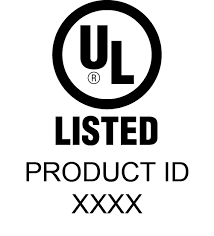Anyone involved in exporting to the US will understand the importance of the requirements of Traceability and Identification of products according to the requirements of the UL Standards.
For those among us that do not currently export to the US or are looking to make your first attempts at reaching the US Markets this will provide a very useful guide.

According to UL they define” minimum requirements for material and components used in UL certified end products as part of its Follow-Up Services Procedures”.
What does this actually mean?
The reality is that you must have a system in place for 100% traceability down to component level. In our specific area of interest cable assemblies must not only use UL approved wire but we must also adopt the following practices to ensure traceability:
- If the UL Mark (label) is affixed to outer wrapping, immediately staple or otherwise affix the tag with the UL Mark (label) to the wire reel upon removal of the wrapping
- Request that the wire supplier affix the UL Mark (label) directly to the spool, rather than the outer wrap
- Reject spools of wire that do not have UL Marks (labels) attached during incoming inspection
- Communicate wire traceability requirements to personnel handling wire in production
Finished Cable Assemblies & Looms:
UL state “An assembler is required to keep records to trace the identity of all materials and components from receipt through storage, inventory, withdrawal, assembly, packaging and shipping”.
“Printed wiring assemblies covered under the category ZPVI2 are identified by an assembler’s name and UL code designation on a part, shipping container or included specification sheet.
Relevant material and component manufacturer name and type designations are marked on a part, shipping container or accompanying documentation. In addition, assemblies covered under this program will also bear the UL Recognized Component Mark”.
What does the above mean you need to do?
The short answer is to have the assembly labelled in accordance with the standard and supplied with documents to prove traceability.
If any of the above is confusing or you are nervous about being correctly adhering to the UL Standards, don’t worry there is plenty of help out there and it’s often not as difficult as it first seems.

Many of the traceability programs you have are already covered under your existing quality standards such as ISO9001:2015.
Once you have made the initial investment in training / paperwork and internal processes your compliance journey will be a realistically smooth one.
Usually your suppliers can help with this process as they will be also helping other customers with the UL Traceability program.

A Guide to UL Traceability and Identification
Anyone involved in exporting to the US will understand the importance of the requirements of Traceability and Identification of products according to the requirements of the UL Standards.
For those among us that do not currently export to the US or are looking to make your first attempts at reaching the US Markets this will provide a very useful guide.
According to UL they define” minimum requirements for material and components used in UL certified end products as part of its Follow-Up Services Procedures”.
What does this actually mean?
The reality is that you must have a system in place for 100% traceability down to component level. In our specific area of interest cable assemblies must not only use UL approved wire but we must also adopt the following practices to ensure traceability:
Finished Cable Assemblies & Looms:
UL state “An assembler is required to keep records to trace the identity of all materials and components from receipt through storage, inventory, withdrawal, assembly, packaging and shipping”.
“Printed wiring assemblies covered under the category ZPVI2 are identified by an assembler’s name and UL code designation on a part, shipping container or included specification sheet.
Relevant material and component manufacturer name and type designations are marked on a part, shipping container or accompanying documentation. In addition, assemblies covered under this program will also bear the UL Recognized Component Mark”.
What does the above mean you need to do?
The short answer is to have the assembly labelled in accordance with the standard and supplied with documents to prove traceability.
If any of the above is confusing or you are nervous about being correctly adhering to the UL Standards, don’t worry there is plenty of help out there and it’s often not as difficult as it first seems.
Many of the traceability programs you have are already covered under your existing quality standards such as ISO9001:2015.
Once you have made the initial investment in training / paperwork and internal processes your compliance journey will be a realistically smooth one.
Usually your suppliers can help with this process as they will be also helping other customers with the UL Traceability program.
Nicab blog
Take a look at some of our other posts